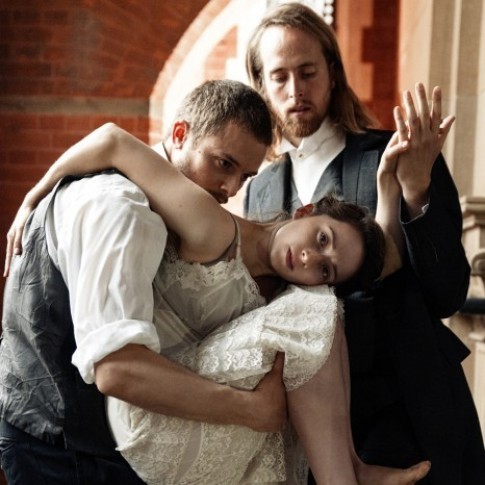 {extravote 5} The advance publicity for Sweetshop Revolution's I Loved You And I Loved You stated that it explored the extremely talented Welsh composer Morfydd Owen and her love triangle with the man she married and the man she loved; someone later pointed out that the promotional photo was reminiscent of that for Dangerous Liaisons.
{extravote 5} The advance publicity for Sweetshop Revolution's I Loved You And I Loved You stated that it explored the extremely talented Welsh composer Morfydd Owen and her love triangle with the man she married and the man she loved; someone later pointed out that the promotional photo was reminiscent of that for Dangerous Liaisons.
Director and choreographer Sally Marie kindly provided a detailed two-page biography of Morfydd Owen in the programme notes, which served as a synopsis for the piece, but such is the Edinburgh Fringe that there wasn't time to read it before the show. If you're lucky enough to catch I Loved You And I Loved You on its upcoming tour, please make sure you take the time to read the programme notes beforehand.
Sally Marie has worked extensively in dance theatre and physical theatre, and these two styles are used to journey through the narrative of I Loved You And I Loved You. Although Morfydd - performed by the remarkably tiny and beautiful dancer Faith Prendergast - is the central character in this piece, she alone does not speak; it is only through her men's reminisces of her, through the playing of her music and the reading of her letters to Eliot Crawshay-Williams that the audience can hear her voice. Onstage, Faith's tiny frame is accentuated as Morfydd is portrayed as a passive dolllike character, easily manipulated by her two men, however it is only as her relationship develops with both that we see her personality and passion start to shine through.
In I Loved You And I Loved You, Sally Marie is not so much a storyteller as a story-shower: she selects scenes from Morfydd's too-short life (she died mysteriously and tragically at age 26 due to her husband's actions) and shows them to us, rather than telling us the story. This means that the audience can savour the unfolding of each scene and the beautiful choreography and dancing before them.
It's a rich, understated work with powerful performances from all three dancers, especially Faith Prendergast, and it's definitely worth seeing more than once to further understand the work's subtlety.
Photo copyright Danilo Moroni

